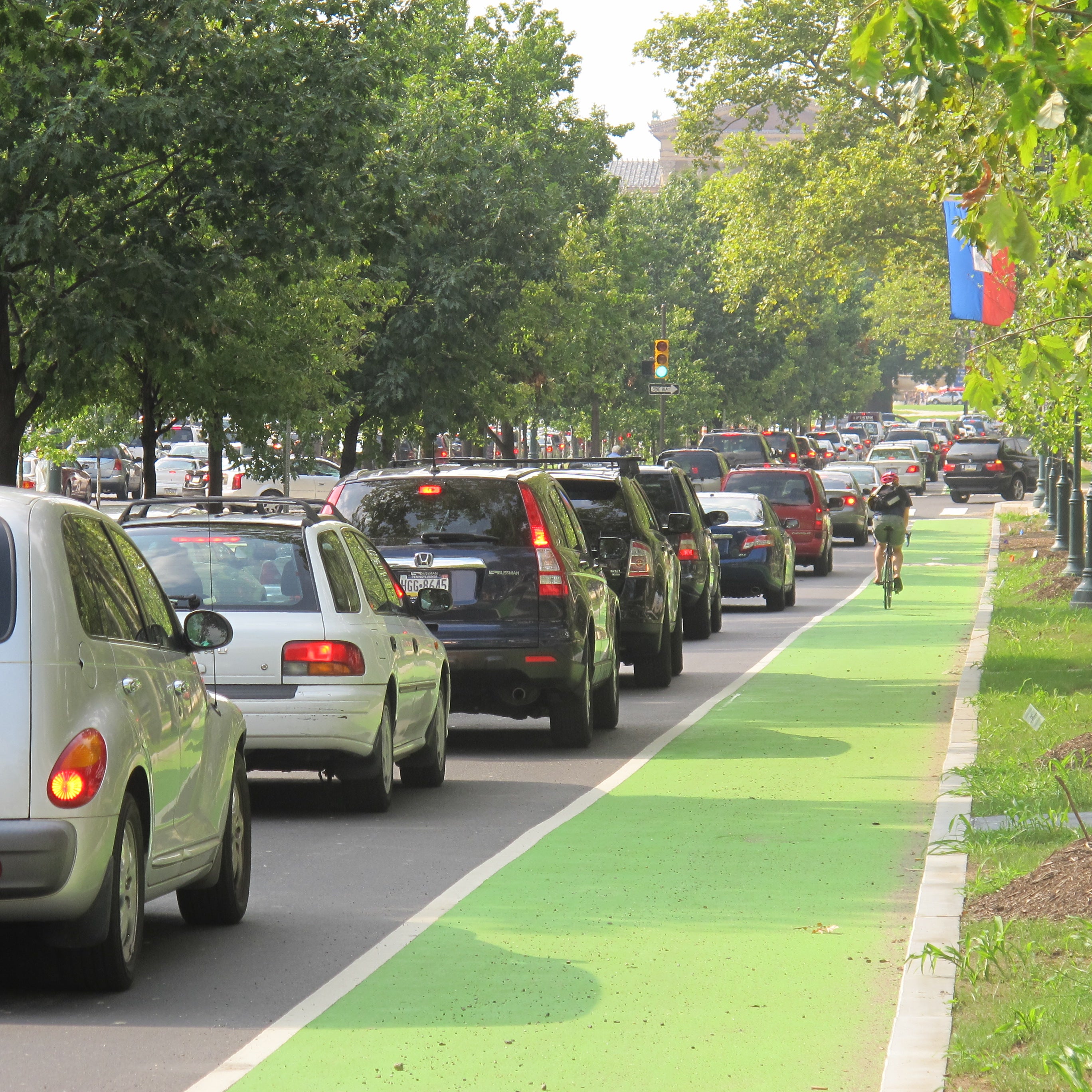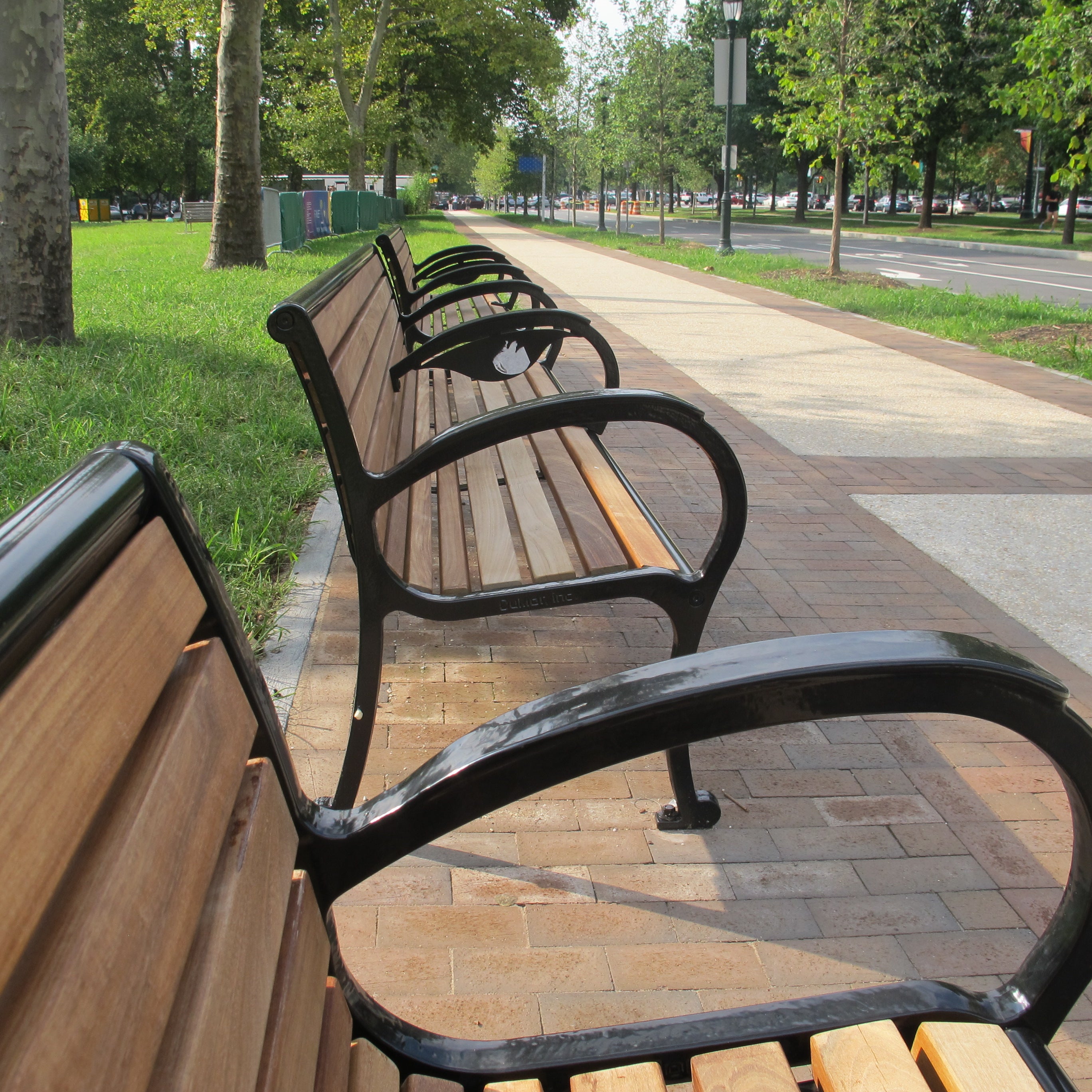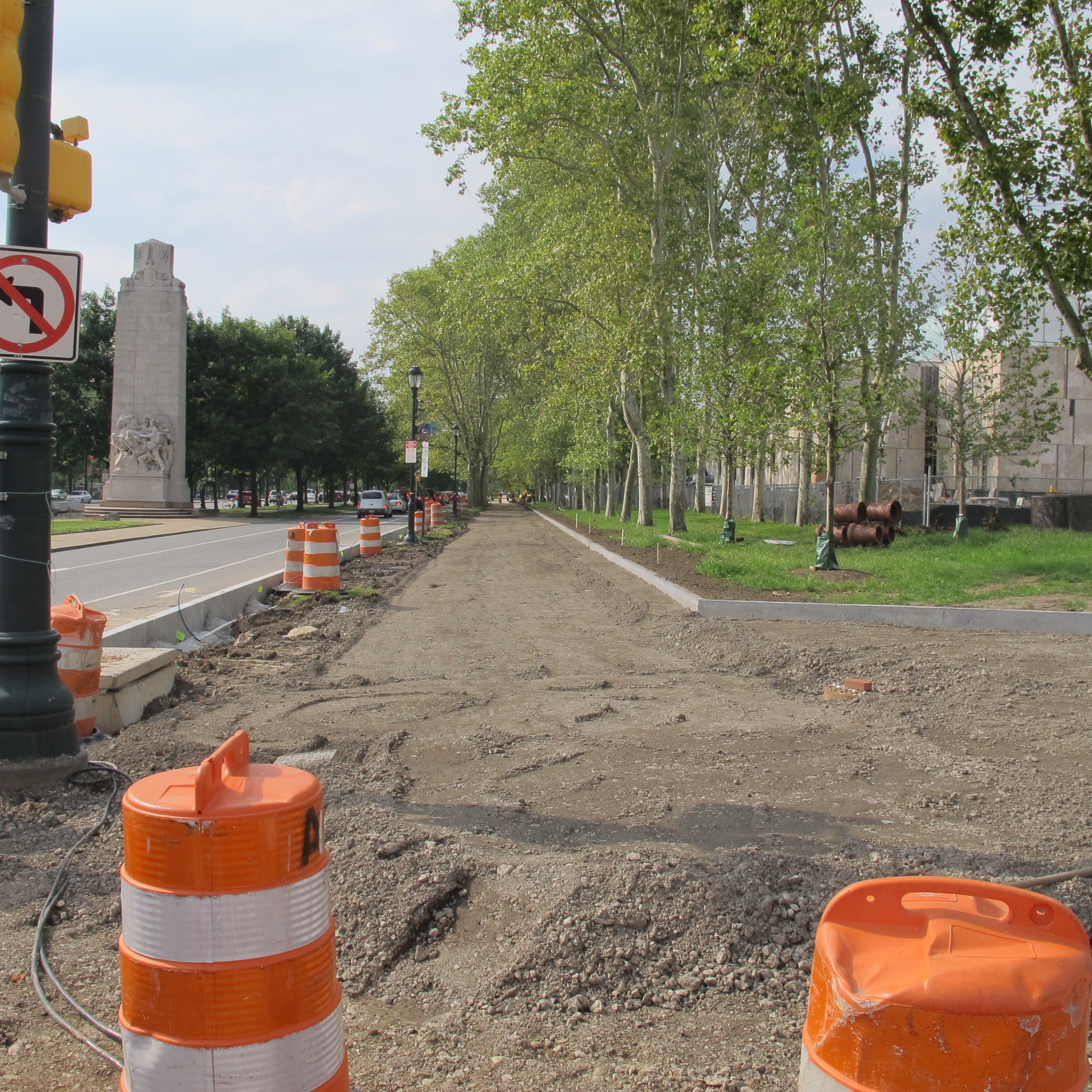More Park, Less Way reflects larger transportation trends

The Benjamin Franklin Parkway has always reflected Philadelphia’s general attitude toward transportation, and as the city rolls out More Park, Less Way: An Action Plan to Increase Urban Vibrancy on the Benjamin Franklin Parkway current transportation trends are again a driving force.
More Park, Less Way, unveiled last week by Department of Parks and Recreation and PennPraxis, offers strategies for making the Parkway a more vibrant, lived-in space.
The Parkway was originally intended as a grand boulevard and civic space adorned with the city’s prized cultural institutions. Philadelphia’s own Champs-Élysées, it was seen as a potential leisure drive to Fairmount Park at a time when, presumably, people took leisure drives.
As the country became more auto-focused, Eakins Oval, the traffic circle across the street from the Philadelphia Museum of Art steps, was built. That addition in the 1960s tipped control of the Parkway into the hands of drivers and reflected the city’s – and the nation’s – preference towards automobiles.
Now, as the city is focusing on pedestrian and bicycle concerns, More Park, Less Way is offering strategies to further cement this bike-ped mindset along the Parkway. More Park, Less Way envisions the Parkway as a public space for local residents and tourists rather than simply an eight-lane thoroughfare. In doing so, the plan reflects increasingly popular transportation trends.
“The current Parkway design accommodates significant volumes of automobile traffic at the expense of pedestrian, bicycle and public transit,” the final report reads. “…Ensuring the comfort and safety of pedestrian and bicycle movement along and across the Parkway is critical, given the growing levels of pedestrian activity within and through the district.”
Today the Parkway sees an estimated 30,000 cars per weekday, but the area has 70,000 residents living within a 10-minute walk. Sixty percent of those local residents use modes other than automobiles to commute to work.
Many of the traffic-calming efforts already in place around Philly have been suggested for the Parkway. Improved pedestrian crossings, bump outs, completed bike lanes and clarified directions for drivers are among the suggested changes.
It is important to note that much work has already been done to set the stage for More Park, Less Way‘s suggestions. In 2010, a year after he announced his Complete Streets Executive Order, Mayor Nutter announced a package of Parkway improvements to the tune of $19.1 million funded by the City, Commonwealth of Pennsylvania and private funders. Some of those changes included removing a vehicle travel lane in each direction to build street parking and bike lanes, redevelopment and landscaping at the Rodin Museum, and the complete redesing of Sister Cities Park.
Then, as it is now, a major focus was on street enhancements and improved green spaces intended to engage both local residents and visitors.
One of the most talked about changes – a change that got applause at the public meeting where the plan was unveiled – is removing the parking from Eakins Oval and turning the area into an flexible, public space. Those leading the plan said this change could be seen as early as Memorial Day.
With these planned changes, More Park, Less Way sets the stage for a more pedestrian and bicycle friendly Parkway. It means that once again the Parkway is shifting to reflect the city’s general attitude toward transit, an attitude that fosters pedestrian-friendly living.
For more on the plan’s traffic and transportation elements, visit the Traffic and Transportation Addendum.
WHYY is your source for fact-based, in-depth journalism and information. As a nonprofit organization, we rely on financial support from readers like you. Please give today.






